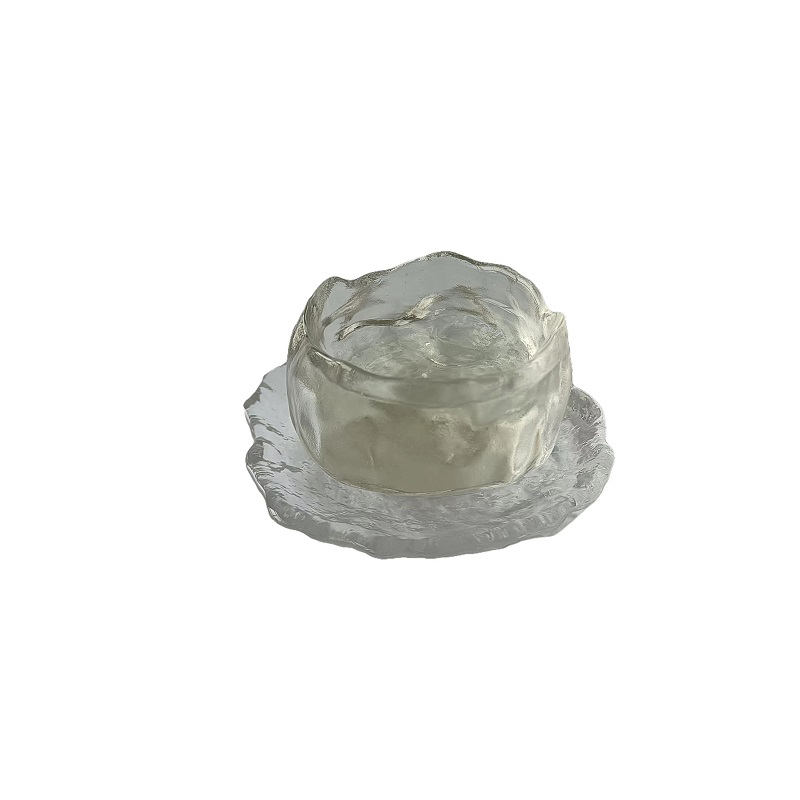Ascorbyl Tetraisopalmiate
Ascorbyl Tetraisopalmitate,also called Ascorbyl Tetra-2-Hexyldecanoate,it’s a molecule derived from vitamin C and isopalmitic acid. The effects of the product are similar to those of vitamin C, most importantly it is able to act as an antioxidant. Ascorbyl Tetraisopalmitate reduces the production of oxidizing agents, which contribute to cell damage after exposure to UV or chemical hazards.The prodcut can protect against DNA damage and skin darkening caused by UV exposure. And,skin visual appearance is also improved by the product, as it promotes collagen synthesis and acts as a drating agent in reducing skin roughness. Key Technical Parameters:
| Appearance | Colorless to light yellow liquid with a faint characteristic odor |
| Identification IR | Conforms |
| Assay | 98.0% min. |
| Color(APHA) | 100max. |
| Specific gravity | 0.930-0.943g/ml3 |
| Refractive index(25℃) | 1.459-1.465 |
| Heavy metals | 20ppm max. |
| Arsenic | 2ppm max. |
Applications:
* * Sun damage protection * * Sun damage repair
* * Antioxidant * * Moisturizing and dration
* * Stimulate collagen production * * Lightening & brightening
* * Treat perpigmentation
Properties & Benefits:
*Superior percutaneous absorption *Inhibits activity of intracellular tyrosinase and melanogenesis (whitening) *Reduces UV-induced cell / DNA damage (UV protection / anti-stress) *Prevents lipid peroxidation and skin aging (anti-oxidant) *Good solubility in common cosmetic oils *SOD-like activity (anti-oxidant) *Collagen synthesis and collagen protection (anti-aging) *Heat- and oxidation-stable
Ascorbyl Tetraisopalmitate works as a powerful antioxidant and whitening agent, with both anti-acne and anti-aging capabilities. It’s a potent, oil soluble form of Vitamin C Ester. Like other forms of Vitamin C, it helps prevent cellular aging by inhibiting the cross-linking of collagen, oxidation of proteins, and lipid peroxidation. It also works synergistically with the antioxidant Vitamin E, and has demonstrated superior percutaneous absorption and stability. Many studies have confirmed the skin lightening, photo-protective, and drating effects it can have on the skin. Unlike L-Ascorbic acid, Ascorbyl Tetraisopalmitate will not exfoliate or irritate the skin. It is well tolerated by even the most sensitive skin types. Also unlike regular Vitamin C , it can be used in high doses, and for up to eighteen months without oxidizing.
Vitamin C
Nowdays Various vitamin C derivatives are used in cosmetics for external use . Pure vitamin C, ascorbic acid or also called L-ascorbic acid (ascorbic acid) has the most direct effect.In contrast to the other variants, it does not first have to be converted into the active form. Studies show that vitamin C supports collagen synthesis and fights free radicals. It is also effective against acne and age spots by inhibiting tyrosinase. However, ascorbic acid cannot be processed into a cream because the active ingredient is too susceptible to oxidation and decomposes quickly. Therefore, preparation as a lyophilisate or administration as a powder is expedient.
In the case of a serum containing ascorbic acid, the formulation should have a strictly acidic pH value to ensure the best possible penetration into the skin. The administration should be an airtight dispenser. Vitamin C derivatives that are less skin-active or more tolerable and that remain stable even in cream bases are particularly suitable for sensitive skin or the thin eye area.
It’s well known that a high concentration of an active ingredient does not mean a better care effect. Only the careful selection and the formulation adapted to the active ingredient ensure optimal bioavailability, good skin tolerance, high stability, and the best possible product performance.
Vitamin C Derivatives
|
Name |
Short Description |
|
Ascorbyl Palmitate |
Fat Soluble Vitamin C |
|
Ascorbyl Tetraisopalmitate |
Fat Soluble Vitamin C |
|
Etl Ascorbic Acid |
Water Soluble Vitamin C |
|
Ascorbic Glucoside |
Connection between ascorbic acid and glucose |
|
Magnesium Ascorbyl Phosphate |
Salty ester form Vitamin C |
|
Sodium Ascorbyl Phosphate |
Salty ester form Vitamin C |
Professional technical engineer dedicated to guide you
According to your actual needs, choose the most reasonable overall design and planning procedures
